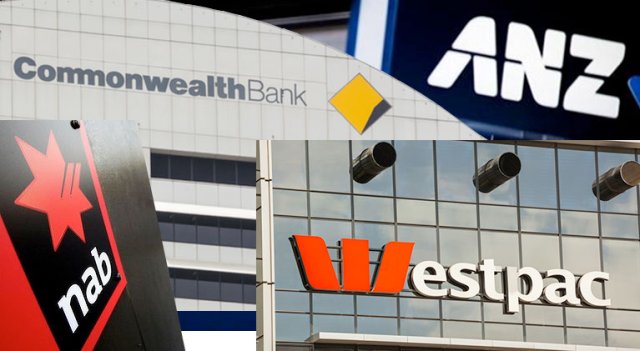
The ANZ announced a full-year cash profit of $6.5 billion on October 29.
Two days later, the NAB posted a profit that was not quite so big. It had only managed $5.94 billion in the year to September.
Banks make their profits in a number of ways. One is a sort of bankers’ version of two-up, betting on foreign exchange rates. This is the world’s largest market.
Reserve Bank of Australia figures for April put the average Australian foreign exchange turnover at US$181.7 billion a day.
But the bread-and-butter earnings of the banks come from increasingly creative charges and interest rates. Banks lend to borrowers at a higher rate than they pay out on either deposited savings or their own interbank borrowings.
These interbank lending rates are set at 11.30am each day in London. They are calculated by determining the average interest rate charged for interbank lending by the major banks. The rate then set is known as the Libor, the London Interbank Offered Rate.
The Libor essentially sets short-term interest rates around the world, from mortgages and student loans to derivate trades. It is the mechanism that underpins interest rates on trillions of dollars of global financial contracts.
All this is ultimately based on trust. The banks that submit data on their interest rates are expected to provide the true costs of their charges, otherwise they could inflate or deflate rates and profit from the results. Respected institutions that they are, we can trust the banks, right?
As it happens, the answer is no. In June last year, Barclays bank paid US$454 million in fines for manipulating the Libor. In December, UBS was fined US$1.52 billion for the same rort. RBS paid out US$612 million for the offence early this year. Last September, the interlender broker ICAP was fined US$87 million.
The latest bank to settle accusations that it rigged the Libor is the Dutch lender Rabobank. On October 29, it agreed to pay US$1.07 billion for its part in what appears to be a rigging scandal that the regulators somehow failed to detect. In Rabobank’s case more than two dozen traders and at least one senior manager got together to manipulate a number of benchmark interest rates.
The scheme operated from 2005 until 2011 and involved employees in Utrecht, Tokyo, London and New York. An email intercepted by the US Justice Department found one Rabobank trader, when informed about the bank’s plans to set Libor “obscenely high” responded: “Oh dear my poor customers. Hehehe.”
Australian banks have been heavily criticised in the past few years for profit-gouging by not passing onto customers the benefits of officially reduced interest rates. They frequently cite their allegedly high borrowing costs as the reason why. Yet we don’t know what their borrowing costs are because they won’t tell us. So much for market “transparency”.
Regulators inquiring into the Libor manipulation scheme seem to have stumbled on the idea that other markets might be subject to similar inside treatment.
Several of the world’s largest currency dealing banks including Barclays, UBS, Deutsche Bank and Credit Suisse group are being investigated in the US, Britain, Switzerland and elsewhere for regularly coordinating to rig currency “fixes”. Two members of the industry committee that assists the Bank of England in overseeing London foreign exchange markets have agreed to take paid leave of absence while the inquiry proceeds.